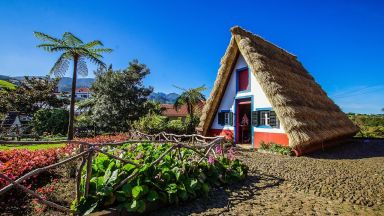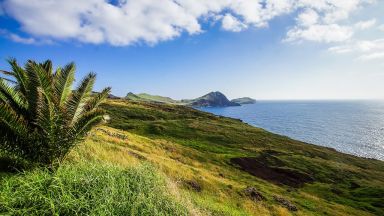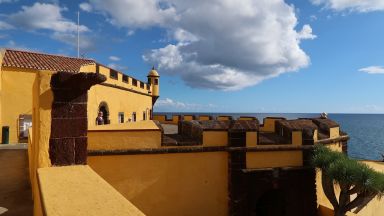Sintra: The Complete Guide
Sintra is a charming Portuguese town situated within the cooling hills of the Serra de Sintra. With its undulating mountains, lush forests teeming with ferns and lichen, exotic gardens, and dazzling palaces, feels like a fairytale come to life. The town’s centre, Sintra-Vila, a UNESCO World Heritage site, is adorned with pastel-colored mansions nestled into verdant hills that slope towards the deep blue Atlantic.
The Celts venerated their moon god in Sintra, the Moors constructed a precipitous castle, and 18th-century Portuguese royalty strolled around its idyllic gardens. Even Lord Byron was entranced by Sintra’s beauty and described it in his epic poem Childe Harold’s Pilgrimage as, “Lo! Cintra’s glorious Eden intervenes, in variegated maze of mount and glen.”
While it’s a must-visit destination for those in Lisbon, many attempt to cram it into a single day trip, which can feel rushed. If time permits, Sintra is captivating enough to warrant a few days’ stay.
Visiting Sintra for the first time and wondering what are the top places to see in the city? In this complete guide, I share the best things to do in Sintra on the first visit. Top help you plan your trip, I have also included an interactive map and practical tips for visiting!
This website uses affiliate links which earn a small commission at no additional cost to you.
9 Best places to See in Sintra
This complete guide to Sintra not only tells you about the very best sights and tourist attractions for first-time visitors to the city but also provide insights into a few of our personal favorite things to do.
This is a practical guide to visiting the best places to see in Sintra and is filled with tips and info that should answer all your questions!
Sintra National Palace

Location: Sintra National Palace, Largo Rainha Dona Amélia, Sintra, Portugal | Hours: 9.30am-7pm | Price: adult/child €10/8.50 | Website | Distance: 1.00km
Visiting Sintra National Palace
Castelo dos Mouros

Location: Castelo dos Mouros, Sintra, Portugal | Hours: 9.30am-8pm | Price: adult/child €8/6.50 | Website | Distance: 1.30km
Visiting Castelo dos Mouros
Palácio e Quinta da Regaleira

Location: Quinta da Regaleira, Rua Barbosa du Bocage, Sintra, Portugal | Hours: 9.30am-7pm Apr-Sep, to 5pm Oct-Mar | Price: adult/child €6/4, tours €12/8 | Distance: 1.40km
Visiting Palácio e Quinta da Regaleira
Pena Palace

Location: Pena Palace, Estrada da Pena, Sintra, Portugal | Hours: 9.45am-7pm | Price: combined ticket with Parque da Pena adult/child €14/12.50 | Website | | Distance: 1.90km
Visiting Pena Palace
Cruz Alta Viewpoint

Location: Cruz Alta, Sintra, Portugal | Hours: 24 Hours | Price: Free | Distance: 2.70km
Visiting Cruz Alta Viewpoint
Park and Palace of Monserrate

Location: Park and Palace of Monserrate, Sintra, Portugal | Hours: 9.30am-7pm | Price: adult/child €8/6.50 | Website | Distance: 3.50km
Visiting Park and Palace of Monserrate
Convento dos Capuchos (Sintra)

Location: Convento dos Capuchos, Colares, Portugal | Hours: 9.30am-8pm | Price: adult/child €7/5.50 | Website | Distance: 5.30km
Visiting Convento dos Capuchos (Sintra)
Cabo da Roca

Location: Cabo da Roca, Estrada do Cabo da Roca, Colares, Portugal | Hours: 24 Hours | Price: Free | Distance: 10.50km
Visiting Cabo da Roca
Palácio de Queluz

Location: Palacio de Queluz, Queluz, Portugal | Hours: 9am-7pm Apr-Oct, to 6pm Nov-Mar | Price: adult/child €10/8.50 | Website | Distance: 12.10km
Visiting Palácio de Queluz


